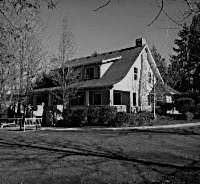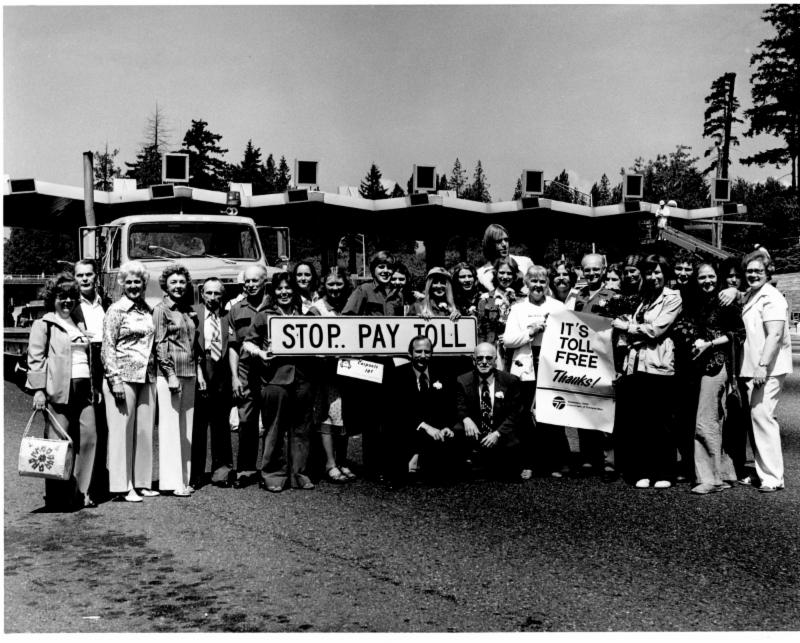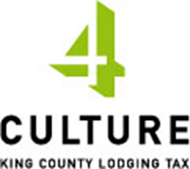No. 8 | May 15, 2019
Eastside Stories
Ferry Landings of Lake Washington--Part II
Eastside Stories is our way of sharing Eastside history through the many events, people places and interesting bits of information that we collect at the Eastside Heritage Center. We hope you enjoy these stories and share them with friends and family.
In the first part of our tour of ferry landings on the east side of Lake Washington we covered the north part of the lake, from Juanita to Hunts Point. Now we will pick up the story continuing around the Points.
For the most part, the public ferry docks and wharves were built and maintained by King County. Except for Kirkland, which became a city in 1905, the eastern shore of the lake was all unincorporated and county government was the default provider of local government services and infrastructure.
When a group of settlers decided they needed a road or ferry dock they would petition the County Commission and make their case for the investment. If the county agreed to build the facility, property owners would be required to donate the necessary land. Roads were usually unpaved at first, and residents would have to undertake the entire process again to get a road widened and paved.
Periodically the county would send out an intrepid engineer to inspect the ferry docks. The logbooks for these inspections are in the King County Archives and provide insight into the challenges of maintaining these critical links. At a time when treated lumber was a rarity, there were perennial problems with rot and dangerous conditions.
And as ferry service declined and then ended, the county was left with a collection of mostly decrepit piers that had been gradually adapted to public uses.
Fairweather Wharf. We'll begin just south of where we left off in Fairweather Bay, between Hunts and Evergreen points, with the strange case of the Fairweather Wharf. Where today there is an engineered yacht basin between the two points, there was originally a wetland. In 1918, after Lake Washington was lowered and the wetland more fully exposed, King County decided that a wharf was needed at this location. This required construction of an elaborate structure--the Boddy-Hindle Trestle--across the wetland, with a spur to the wharf.
While the Boddy-Hindle Trestle became an important route through the Points, linking Evergreen Point to the base of Hunts Point, where there was a school and market, the wharf was never much used. No one lived in the immediate area and more convenient wharves were available on the points.
The image shows Fairweather Wharf when it was relatively new, with the section to the left leading to the Boddy-Hindle Trestle. A wharf inspector's report from 1930 indicates that the wharf is badly rotted and that everything above the water needed replacing. An inspector's report from 1946 indicates that the wharf had completely disappeared and no sign of it remained. The inspector was not bothered, though, noting that the wharf "was in a location not suitable for any reasonable construction supported by piling or otherwise."
Evergreen Point-Lake Lane . This pier served Evergreen Point and was a regular stop for the steamer Ariel. Its origin seems somewhat uncertain, as the Wharf Inspector of 1946 cannot find records of it having been built by King County. By 1946 ferry service had ended and the inspector noted that the pier was used for public access to the lake for swimming and boating--activities of which he approved! This location remains a public dock maintained by the City of Medina. (Photo courtesy of Washington State Archives)
Original Medina dock . Medina enjoyed regular ferry service from Seattle as early as the 1890s, with this robust pier at the foot of what is today N.E. 8th Street, near the "Green Store" and post office. The lakefront land for the wharf was donated to the county by Thomas Dabney, one of the first residents of the area. When a new car ferry landing was built to the south, the new owner of the Dabney property, Captain Elias Johnston, went to great lengths to reclaim the land from the county.
First Medina car ferry landing . The Port of Seattle introduced car ferry service to Medina and Bellevue in 1913, and this was the original wharf at the foot of Evergreen Point Road. This pier was left high and dry just a few years later when Lake Washington was lowered by nine feet with the opening of the new Ship Canal. The identity of the child on the beach is not known.
Medina Ferry Terminal . Following the lowering of Lake Washington and the exposure of new shoreline, King County built a new car ferry dock and terminal building. The original dock was built immediately adjacent to the terminal building and later moved to the south as shown in this image. When ferry service ended, the terminal building became a community clubhouse and, later, Medina City Hall. A much-remodeled city hall and beach park remain on the site today.
Clyde landing, Meydenbauer Bay, Bellevue. This pier stood at the foot of Clyde Road (now 92nd Avenue NE), which was named by an early resident with Scottish roots. It is not clear how much ferry service was provided to this location, as it is close to the main Bellevue dock. But the property did remain in public ownership and was converted into Clyde Beach Park, which is maintained by the City of Bellevue.
Learn more about the Eastside. Books available from Eastside Heritage Center include:
Lake Washington: The Eastside
Bellevue: the Post World War II Years
Our Town, Redmond
Medina
Hunts Point
Bellevue: Its First 100 Years
Our Mission To steward Eastside history by actively collecting, preserving, and interpreting documents and artifacts, and by promoting public involvement in and appreciation of this heritage through educational programming and community outreach.
Our Vision To be the leading organization that enhances community identity through the preservation and stewardship of the Eastside’s history.
Eastside Heritage Center is supported by 4 Culture





















